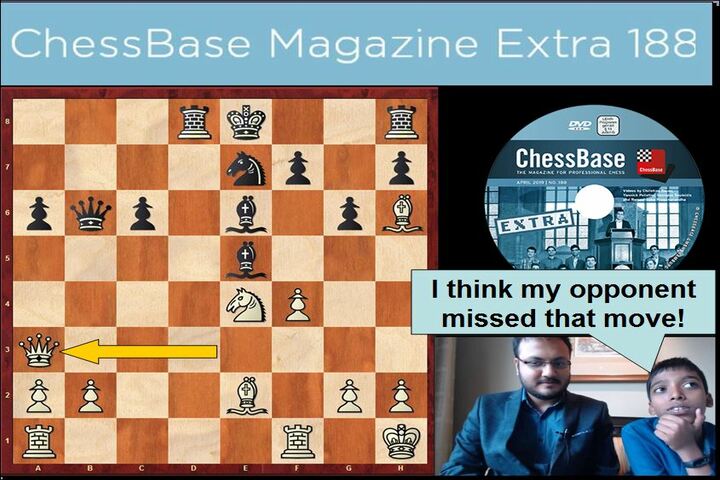An "extra" review
This ChessBase Extra is made up of four sections. The first is about Opening videos. There are three such videos, two from the famous Scandinavian expert: GM Christian Bauer. One of the two videos is about the London System, on which Bauer just released a ChessBase DVD in French! Perhaps an occasion to refresh one's own French language, and eventually visit Paris, the city of love!
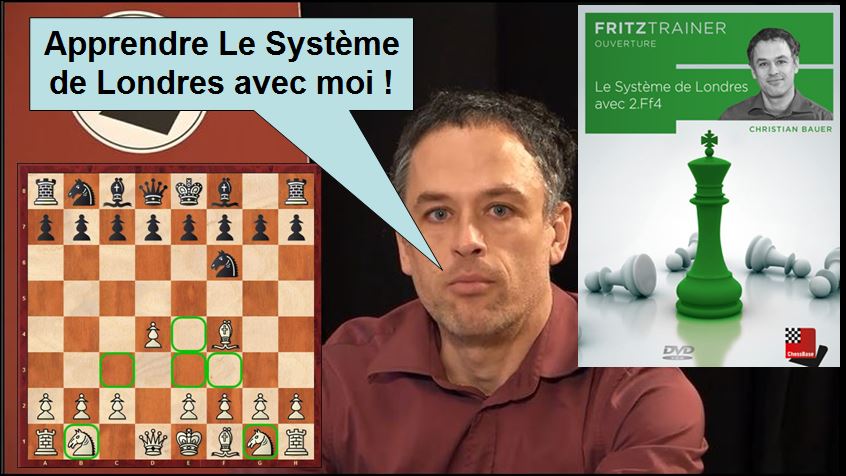
Parlez vous francais?
Luckily for us Anglophones, in this video Bauer speaks in English, and annotates one of his very successful games using the London system. He mentions he learned a lot about the London while researching the material for the London System DVD he made for ChessBase. I searched for Bauer's last games, and I found one which was quite interesting for those playing the London. It is possible to witness a sort of sleight of hand, or how to bring a Black player who is trying to play the King's Indian Defense (KID), into a Pirc! The two openings look the same, but the difference in the placement of the c-pawn is important (in the Pirc still on c2, in the KID on c4). Practically, in the Pirc there is not a hole on d4 which is typical of the KID.
The second video is also from Bauer — another deeply annotated game, but this time in the Nimzo-Indian.
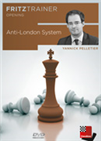 On this DVD GM Yannick Pelletier offers Black a repertoire against the London System that you can employ no matter which opening (Systems with d5, systems with g6, Queen's Indian, Queen's Gambit, Benoni, Benko, Dutch) you usually play against 1.d4 followed by 2.c4. Thematic games explain and illustrate the theory and ideas of the repertoire Pelletier proposes.
On this DVD GM Yannick Pelletier offers Black a repertoire against the London System that you can employ no matter which opening (Systems with d5, systems with g6, Queen's Indian, Queen's Gambit, Benoni, Benko, Dutch) you usually play against 1.d4 followed by 2.c4. Thematic games explain and illustrate the theory and ideas of the repertoire Pelletier proposes.The Opening Videos section closes with a presentation by GM Pelletier on his latest DVD, which is based on an Anti-London system. The video tells the story of a great game played by Pelletier in 2017, which has changed the move order for White, because Pelletier as Black was able to shred his opponent into pieces in just 30 moves!
Since I use the London as White, I paid attention to this video, because it is a great lesson on how to avoid a loss as White (even if he intended the video more as a teaser for buying his new series).
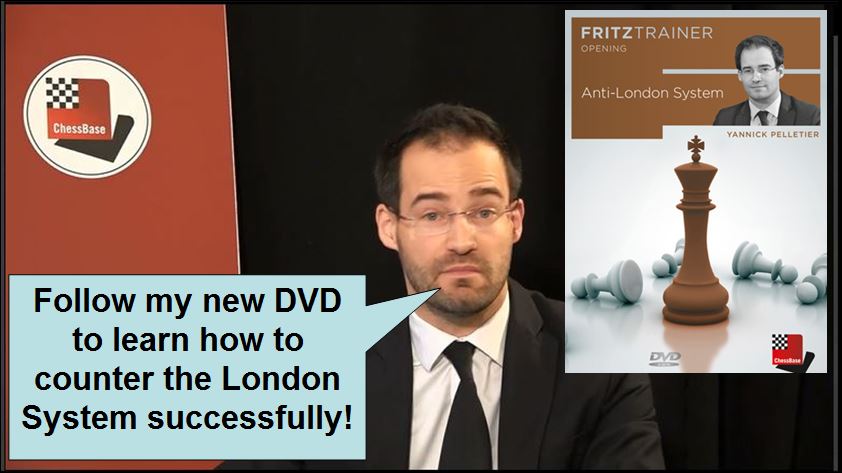
Thanks to the fact this issue of CBM Extra has 35000+ games I looked into the line Pelletier gave for White, which we have after the moves 1.d4 d5 2.♘f3 ♞f6 3.♗f4 c5 4.e3 ♞c6 5.♘bd2 the result was 36 games. I began to play through the one White had lost, to have an idea of the potential problems White can face. Obviously it's ideal to subscribe to ChessBase Magazine and Extra to gain both a sharp training tool provided by top players and the dedicated ChessBase team, plus the Extra — a handy reference thanks to the huge amount of games available, for answers to every theoretical question one can have. We don't have to re-invent the wheel, but rather have a head start over other players theoretical research and insight. Here a small sample of games lost by White in the line mentioned above:
An interesting section added to CBM Extra is the Lucky Bag! In this issue there is a video, nearly one hour long, made by Sagar Shah and one of the youngest GMs in history: Praggnanandhaa Rameshbabu.
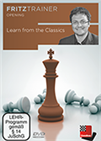 Sagar Shah shows you on this DVD how you can use typical patterns used by the Master of the past in your own games. From opening play to middlegame themes.
Sagar Shah shows you on this DVD how you can use typical patterns used by the Master of the past in your own games. From opening play to middlegame themes. 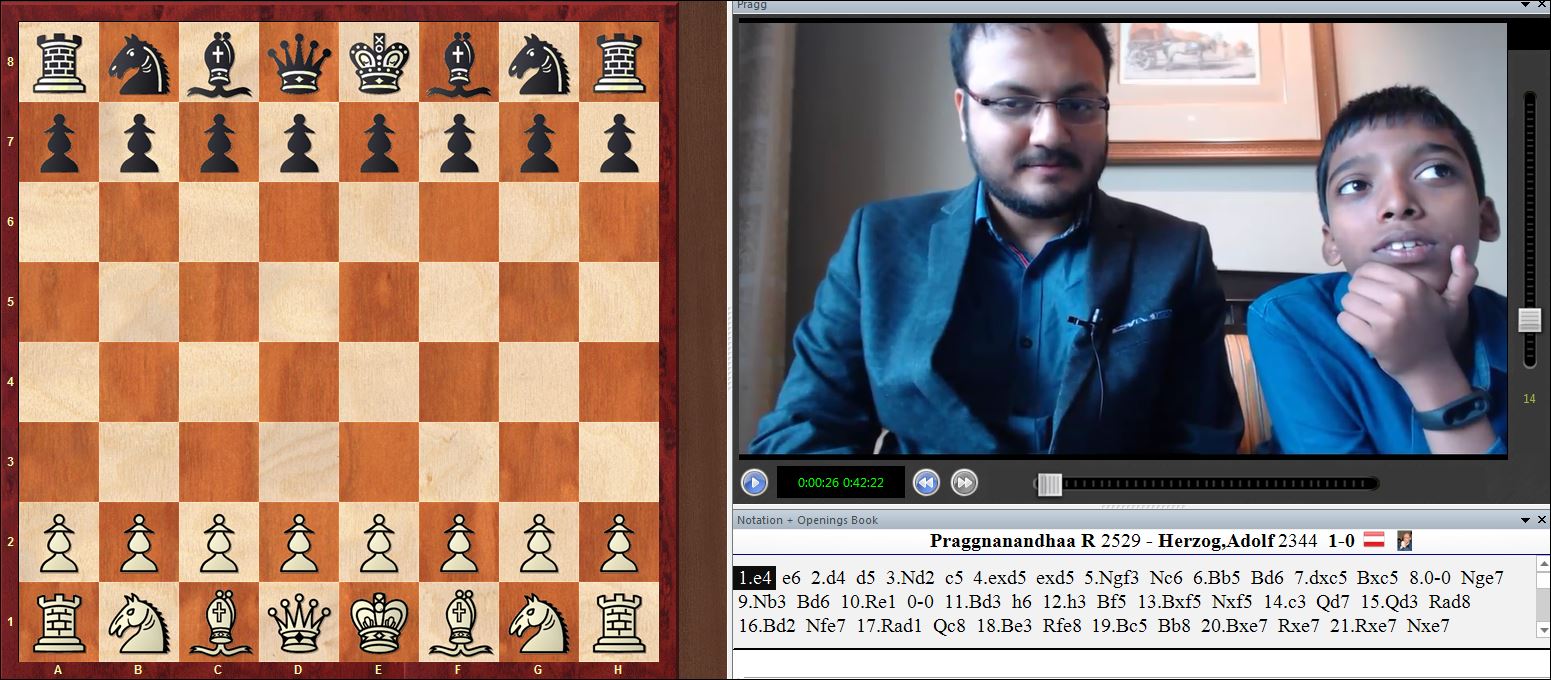
In the video GM Praggnanandhaa explains four of his games, and two more games are annotated by him.
I'll show here the one against Italian GM Moroni, because it's quite exciting!
But the surprises from the Lucky Bag are never ending! We find twelve games deeply annotated from Gibraltar, with notes by GMs Krasenkow and Edouard. While GM Adhiban, also annotates two of his game he played in this such prestigious tournament. In this Lucky Bag there are a total of 28 annotated games, giving a lot of material to study to those interested in improving their chess.
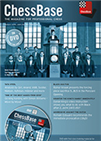 Tata Steel 2019 with analyses by Anish Giri, Vishy Anand, Vidit, Peter Svidler etc. Yannick Pelletier, Erwin l'Ami and Mihail Marin present selected games in video format. Plus 11 opening articles with new repertoire ideas, e.g. Dutch with 2.Bg5!?
Tata Steel 2019 with analyses by Anish Giri, Vishy Anand, Vidit, Peter Svidler etc. Yannick Pelletier, Erwin l'Ami and Mihail Marin present selected games in video format. Plus 11 opening articles with new repertoire ideas, e.g. Dutch with 2.Bg5!?I'd like to point out another important use of CBM Extra 188. When I'm a week away from a tournament, I try to see the latest games played, in the opening repertoire I practice.
As mentioned before in this issue of CBM Extra there were 35,000 games!! Since I became a Sicilian Najdorf player, I need to review also the games in the anti-Sicilians. One of the most used anti-sicilians, definitely a solid choice, is the Alapin, which we have after the moves: 1.e4 c5 2.c3
I put the moves on a board, and copy it in filter under the position tab, and then click OK:
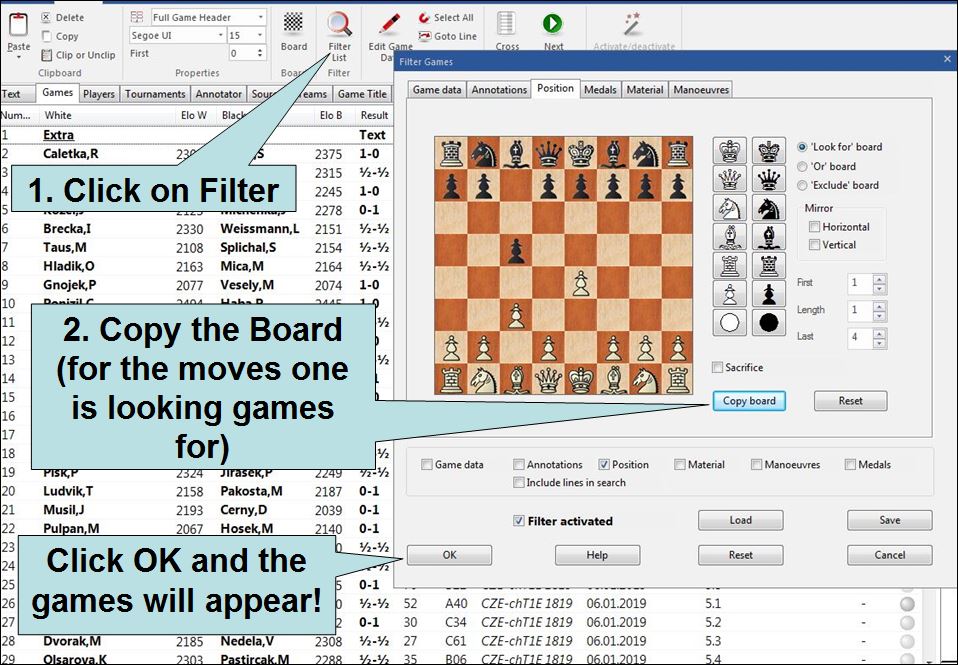
The result was 410 games! Then I click on the Elo tab for Black, so the list of games is immediately re-ordered showing the strongest Black players. I use them as role-model, for learning how to play against the Alapin.
This further query gave me 50 games played by Black players who were over 2400 (the rating of an International Master).
But is it finished? No. I watch immediately the games which have a big gap in rating. Why? Because generally they will teach me what my "actual" opponents, those I meet in tournaments, think and play, and how a stronger titled player deals with them. Yes, this is the ugly truth, in the weekend tournaments where I play, I don't play five rounds against top GMs, rated 2700, or young IMs going for the GM title, I play against players who are rated from 1800 to 2200.
Here a sample of games played against the Alapin, following the criteria I just mentioned:
I also pay special attention when there is an upset (a weaker player beating a stronger one) because that can definitely happen to me, if it happened to a titled player.
Also, pay attention to the draws. Yes, draws can be quite instructive, mainly those which are over 50-70 moves. The reason is to discover common endgames which happen over and over in this opening. Another important factor is: we see how a good player can squeeze out everything possible from a game, and this can give us ideas for ourselves!
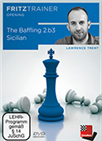 Make life difficult for the Sicilian! 2.b3 is a thoroughly venomous but still solid kind of "Anti-Sicilian". No matter what setup black chooses, the bishop on b2 will always be unpleasant for him.
Make life difficult for the Sicilian! 2.b3 is a thoroughly venomous but still solid kind of "Anti-Sicilian". No matter what setup black chooses, the bishop on b2 will always be unpleasant for him.Obviously, I've this process must be repeated for other anti-sicilians, whether the Smith-Morra, The Grand Prix, The b3 Sicilian etc. Then we must repeat this procedure for the other openings in one's own repertoire.
By the way, without burdening the reader with more games, but when I searched the Sicilian Najdorf, it returned 902 games!! In this case one cannot use a parsing method of checking wins or upsets, because the Sicilian Najdorf has too many main answers by White for move 6. I believe one should make a search for each of the main moves, and watch at least 10 games for each.
When I write "watch" it is not the correct verb, since it is more important to be interactive. Thanks to ChessBase 15 one can use the training function as a guess-the-move feature — that should be the right way to "watch", keeping track of one's own comments, and seeing why different moves were chosen.
Final thoughts
Every chess player competing in tournaments needs to work on his or her chess. Working only on tactics is not enough, we also need to work on our openings (because we cannot reach the endgame if we don't get out of the opening alive!) and the only way to do it holistically is through studying the latest games. The CBM Extra provides over 35,000 games to peruse and learn from. But the extra is also a chance to improve one's own game through the many annotated games which come with it. If we just study one game a day, it will take a month to study all the annotated games which come with this issue of CBM Extra. And of course one can also just enjoy the ride thanks to the annotated game videos. They can give insight into how a titled player thinks, while showing us the beauty of chess. In this review, one could also gain a glimpse, and ideas, on how to prepare for a tournament.
Give ChessBase Magazine a chance to train and improve you as chess player. Beware: your opponents can use it too!
New: Now with "Lucky bag"! Video interview with Praggnanandha Rameshbabu. Opening videos by Christian Bauer and Yannick Pelletier. Plus 35,000 new games for your database!
Links
